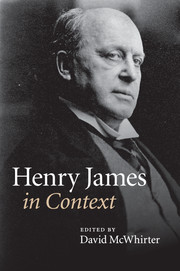Book contents
- Frontmatter
- Contents
- List of Illustrations
- Notes on Contributors
- Preface
- Abbreviations
- Chronology
- Part One Life and career, times and places
- Part Two Historical and cultural contexts
- Chapter 9 Aestheticism and Decadence
- Chapter 10 Authorship
- Chapter 11 Children
- Chapter 12 Consumer culture
- Chapter 13 Cosmopolitanism
- Chapter 14 Courtship, marriage, family
- Chapter 15 Ethics
- Chapter 16 Language
- Chapter 17 Law
- Chapter 18 Manners
- Chapter 19 Media and communication technologies
- Chapter 20 Modernism
- Chapter 21 Money and class
- Chapter 22 Museums and exhibitions
- Chapter 23 Nationalism and imperialism
- Chapter 24 Print culture
- Chapter 25 Psychology
- Chapter 26 Race
- Chapter 27 Realism and naturalism
- Chapter 28 Sexualities and sexology
- Chapter 29 Social sciences and the disciplines
- Chapter 30 Things
- Chapter 31 Time
- Chapter 32 Travel and tourism
- Chapter 33 Urbanity
- Chapter 34 Visual culture
- Chapter 35 Women and men
- Chapter 36 Work
- Part Three Reception
- Further reading
- Index
- References
Chapter 27 - Realism and naturalism
Published online by Cambridge University Press: 05 August 2014
- Frontmatter
- Contents
- List of Illustrations
- Notes on Contributors
- Preface
- Abbreviations
- Chronology
- Part One Life and career, times and places
- Part Two Historical and cultural contexts
- Chapter 9 Aestheticism and Decadence
- Chapter 10 Authorship
- Chapter 11 Children
- Chapter 12 Consumer culture
- Chapter 13 Cosmopolitanism
- Chapter 14 Courtship, marriage, family
- Chapter 15 Ethics
- Chapter 16 Language
- Chapter 17 Law
- Chapter 18 Manners
- Chapter 19 Media and communication technologies
- Chapter 20 Modernism
- Chapter 21 Money and class
- Chapter 22 Museums and exhibitions
- Chapter 23 Nationalism and imperialism
- Chapter 24 Print culture
- Chapter 25 Psychology
- Chapter 26 Race
- Chapter 27 Realism and naturalism
- Chapter 28 Sexualities and sexology
- Chapter 29 Social sciences and the disciplines
- Chapter 30 Things
- Chapter 31 Time
- Chapter 32 Travel and tourism
- Chapter 33 Urbanity
- Chapter 34 Visual culture
- Chapter 35 Women and men
- Chapter 36 Work
- Part Three Reception
- Further reading
- Index
- References
Summary
More consistently and more explicitly than any of his contemporaries, American or European, Henry James recognized literary realism as the attempt not to reproduce the real directly, but rather to create an impression of it – to evoke for readers the ‘sense’, the ‘air’, ‘the odour’, the ‘strange, irregular rhythm’ of reality (LC-1, 52–3, 58). Realism, for James, was an art like any other. As such, it was never separable from imagination and, just as important, from matters of style, method and form. Writing in 1914 about ‘the younger generation’ of modern novelists, James insisted that, no matter how apparently unshaped by conventional ideas of narrative the so-called ‘slice of life’ offered by the ‘new novel’ might be, that slice could not be conceived outside the artist’s ‘question of where and how to cut it’. Where and how to cut is ‘the office of method, the idea of choice and comparison’. Indeed, ‘there can be no such thing as an amorphous slice’ of life because a slice is ‘born of naught else but measured excision . . . It has been tainted from too far back with the hard liability to form, and thus carries in its very breast the hapless contradiction of its sturdy claim to have none’ (LC-1, 144–5).
In an 1867 review of Rebecca Harding Davis, James recognizes the ‘strength’ given to Davis’s fiction by her intensely sympathetic focus on the industrializing nation’s ‘poor people – laborers, farmers, mechanics, and factory hands’ (LC-1, 221). Recently, Davis’s portrayal of the exploitation and suffering of factory workers under American capitalism – particularly ‘Life in the Iron Mills’, published by the Atlantic Monthly in 1861 – has led scholars to regard her as among the first writers of realism in the US, and even as an early naturalist. The young James does not hesitate to endorse the worthiness of the industrial poor as literary subjects, a point far from universally accepted at the time. He insists, however, that even factory workers do not provide an author with a shortcut to realism:
The unfortunate people whom she transfers into her stories are as good material for the story-teller’s art as any other class of beings, but not a bit better. They come no nearer doing the work for themselves and leaving the writer to amuse himself than the best-housed and the best-fed and the best-clad classes in the community.
(221)- Type
- Chapter
- Information
- Henry James in Context , pp. 292 - 300Publisher: Cambridge University PressPrint publication year: 2010



